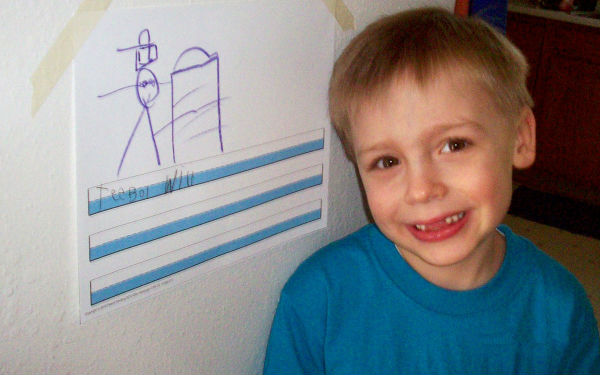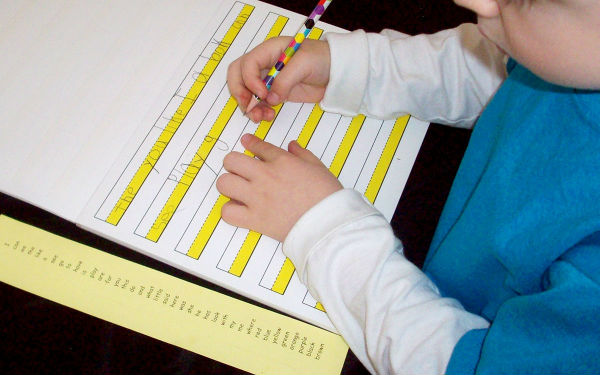*Thank you to our guest author, Ellen Kinsinger, OTR/L, Creator of BrightLines Specialty Paper – "The Original Highlighted Paper!" This visually simplified paper is a top favorite choice of occupational therapists and teachers!
Written language is a complicated task; writing requires a large spectrum of skills from cognitive (generating and organizing the text) to sensorimotor (physical act of handwriting). First, the student needs to create the message they wish to convey and organize how they wish to covey it. Next, retention of this sentence is needed to initially compose and write down the message. He needs to utilize the grammar and spelling rules. Finally, the task of legible printing or cursive writing occurs.
 It is important to examine the demands that the student must meet in each of these areas. Many students may have difficulty managing the physical aspect of handwriting simultaneously with the cognitive demands. For these students, identifying the most important aspect is helpful. First, identify the goal of the assignment. For example: Is the goal to generate a topic? Is it to practice verb use? Is it to journal ideas? Or is it to practice proper letter formation or spacing? If handwriting legibility is not the priority, typing or dictation could be utilized. By reducing the physical handwriting requirements, a struggling student can successfully be a part of the writing process.
It is important to examine the demands that the student must meet in each of these areas. Many students may have difficulty managing the physical aspect of handwriting simultaneously with the cognitive demands. For these students, identifying the most important aspect is helpful. First, identify the goal of the assignment. For example: Is the goal to generate a topic? Is it to practice verb use? Is it to journal ideas? Or is it to practice proper letter formation or spacing? If handwriting legibility is not the priority, typing or dictation could be utilized. By reducing the physical handwriting requirements, a struggling student can successfully be a part of the writing process.
When the goal is legibility, reducing the cognitive requirements for written expression is helpful. An Occupational Therapist addresses several components of the physical requirements of handwriting: Posture, balance, upper extremity strength, bilateral coordination, hand skills, hand strength, and pencil grasp. Additionally, age appropriate visual motor skills, attention to task, kinesthesia, proprioception are required to generate legible handwriting. A therapist addresses deficits in any of these areas with remediation or compensatory strategies. Remediation techniques may include exercises. Compensation could include changes in positioning or pencil grips.
 One of the adaptations is to simplify the paper on which the student writes. When selecting an adapted paper from the many styles available, consider the needs of the student. Most will benefit from an adaptive paper that is visually simplified. A visually simplified paper has minimal visual cues. The most important cues provide the student with guidance for orientation of the letters to the writing lines.
One of the adaptations is to simplify the paper on which the student writes. When selecting an adapted paper from the many styles available, consider the needs of the student. Most will benefit from an adaptive paper that is visually simplified. A visually simplified paper has minimal visual cues. The most important cues provide the student with guidance for orientation of the letters to the writing lines.
Careful consideration of the physical and cognitive demands of handwriting will help the student enjoy written language, make handwriting easier for the student, and produce a more legible product.
More articles you might enjoy:
The Benefits of Using Pencil Grips
Back to School Favorites for Homeschoolers & Classrooms
Fun Ideas for Tong Play and Favorite Fine Motor Skill Tools
The Many Benefits of Sensory Rich Play and How To Make Your Own Sensory Bins

